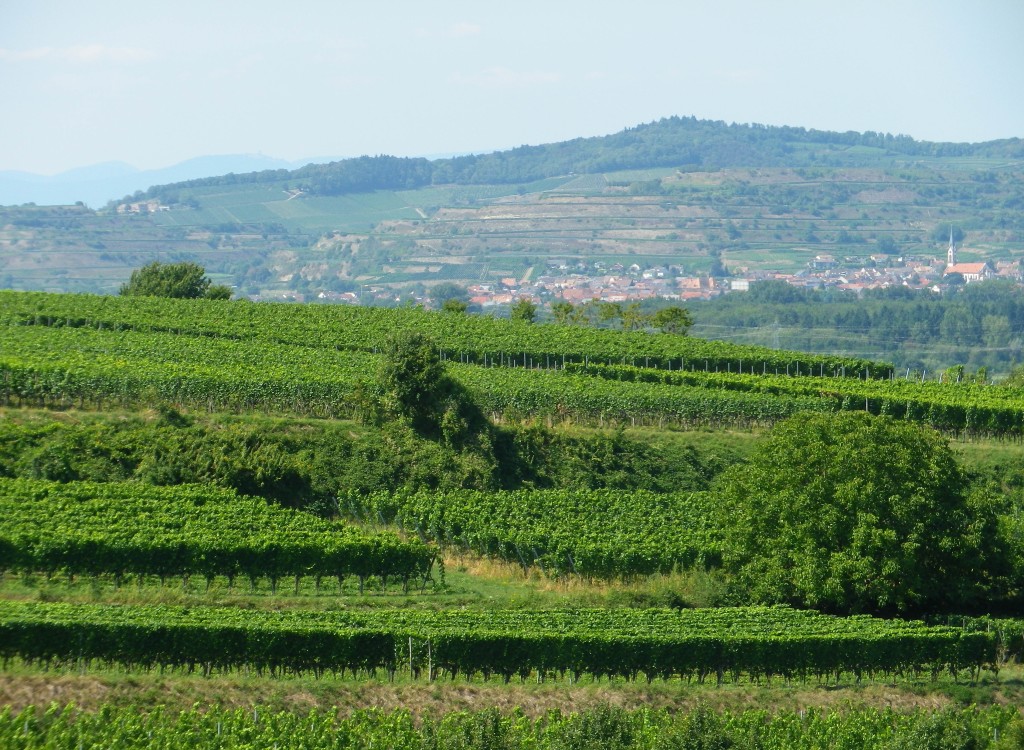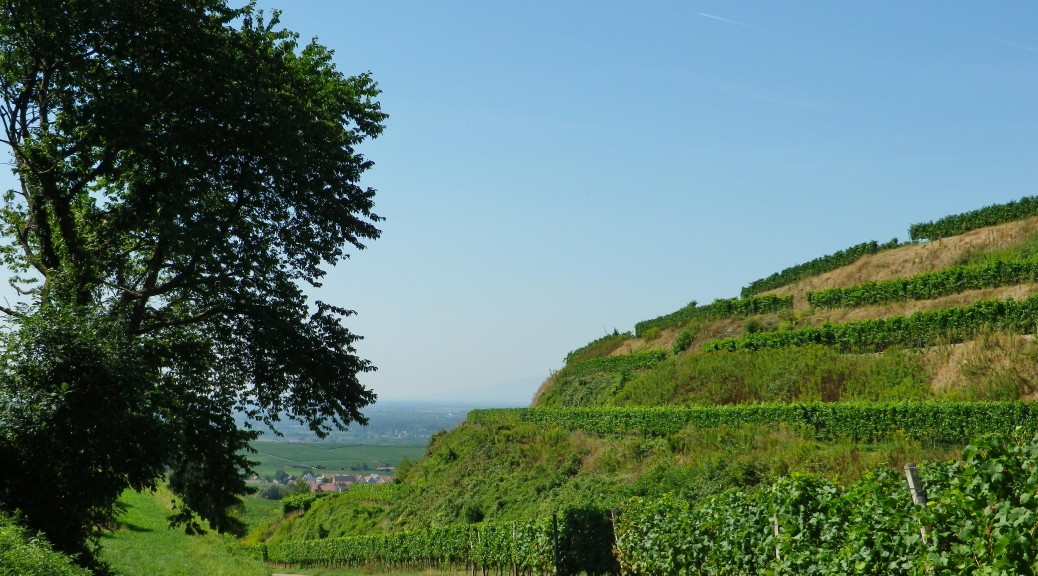The Kaiserstuhl (Emperor’s Seat or Chair), rises in dramatic isolation from the flatlands of the valley of the Rhine. This vine-covered promontory allegedly got its name from the actions there of an early Holy Roman Emperor. Its majestic appearance alone is reason enough for the name, in my opinion.
The Kaiserstuhl promontory overlooks former imperial holdings north, south, east and west. It contains two wine districts in the German wine region of Baden, the Tuniberg and the eponymous Kaiserstuhl, and it abuts two others. Additionally, in the distance, on the other side of the Rhine, lie the vineyards of Alsace, France. Wine is definitely king in this southwest corner of Germany!

With so many hills and dales, there are numerous hiking and biking trails here. I chose one that cycled through the vineyards on the slopes. It was an adjunct to a much longer trail, covering two large wine districts in Baden, the Breisgau and the Markgraeflerland. (See the post on hiking in the Breisgau district.) Deviating from the main trail to follow this one meant visiting yet another wine district in Germany.
Departing from the 235 kilometer-long “Bike Trail(s) through Baden Wine-land” at Malterdingen, this trail follows an alternative route, the Kaiserstuhl Alternative, through some unique topography. Born of volcanic activity, the Kaiserstuhl terroir is both forgiving and demanding. Germany’s average temperatures and annual hours of sunshine reach their maximum here. The trail skirted across the flat lands immediately around the hills, circling from Riegel through Endingen am Kaiserstuhl to Koenigschaffhausen, where apple, plum, and pear trees presented a cornucopia of abundance. The corn stalks were taller than any I had ever seen in Germany.
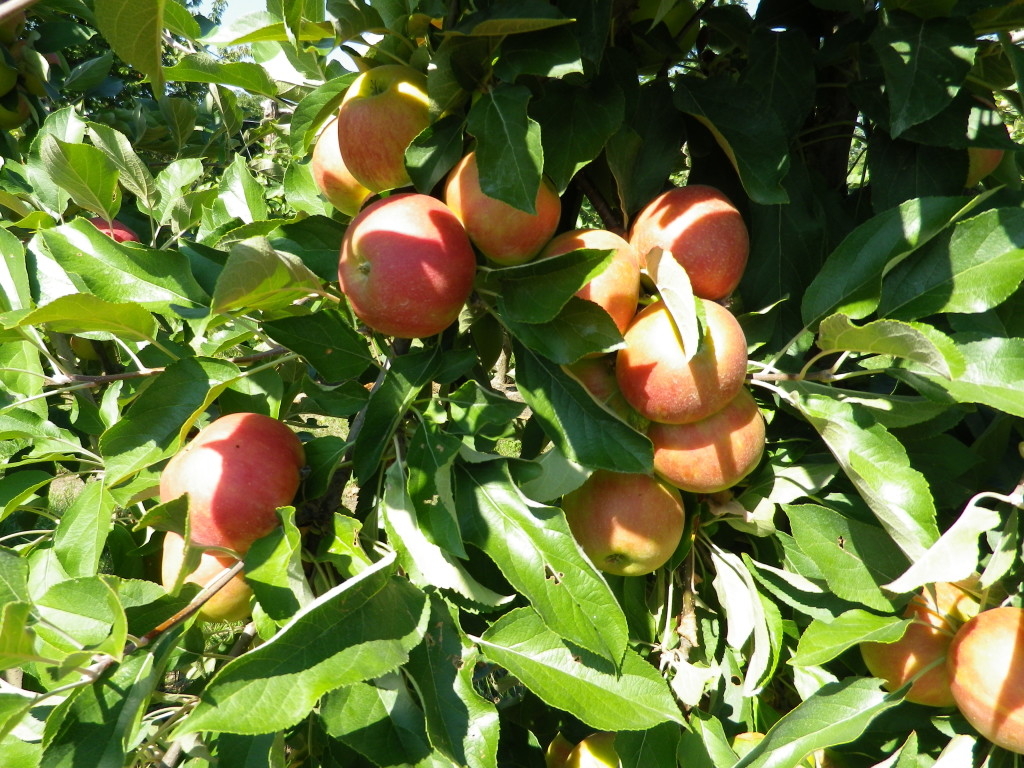
Then the steepness of this terrain exacts its demands on vintners, and cyclists. Vineyards, seen green and expansive on the looming hills, remained a more distant apparition until the trail reached Kiechlinsbergen. Here the hills began. The first hill to cycle over was appropriately named the Teufelsburg, the devil’s stronghold. From the top of this hill, there are commanding views south, west and north, of both the German and French sides of the Rhine Valley.
Vineyards lined the ascent as well as the descent all the way to Bischoffingen then Oberrotweil. Oberrotweil, nestled in a narrow valley, is a picturesque little village that forms part of a community known as Vogtsburg im Kaiserstuhl. As one of the most important grape-growing centers in the Kaiserstuhl district, it also seems to serve as a hub for the many hiking trail that explore this quiet corner of the region. Uncrowded and low-key, it nonetheless had a surprisingly fair number of eateries.
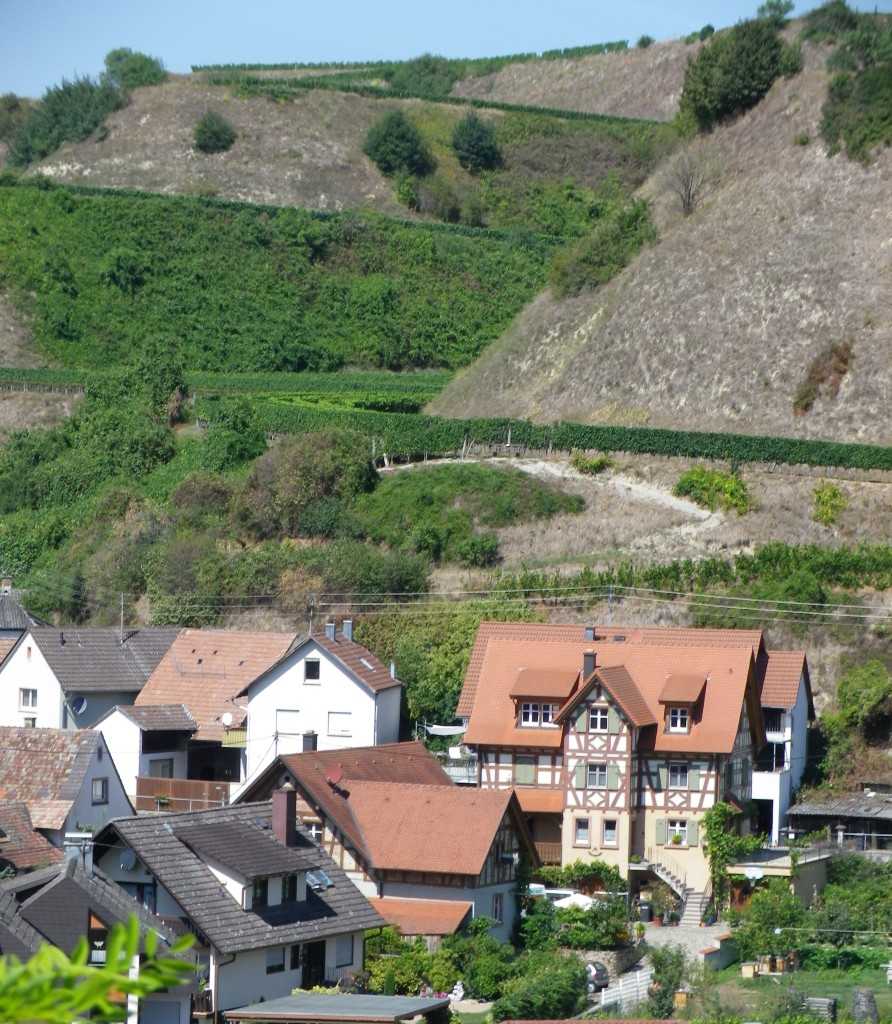
Leaving the village along a creek, the trail turned into the hills again, for yet another vertical challenge. Once down in Bickensohl, the village’s attractive-looking cooperative winery comes into view. Many area growers send their grapes to this winery. Given the sheer amount of vineyards I passed through, as well as those I viewed from above, this winery must have quite a production schedule!
Over yet another serious hill, the trail continued to offer spectacular distant views as it approached Ihringen, one of the largest towns in the Kaiserstuhl, with its own cooperative winery. This was the last wine village on the trail that lies in the Kaiserstuhl district. Ihringen has been known as a wine area since at least 962, most likely supplying communion wine to the major ecclesiastical foundations in nearby Breisach. (Impressive Breisach, a former Celtic – then Roman – stronghold, is not on the trail, but it has its own wineries, to include the well-known Geldermann Sektkellerei, a sparkling wine house.)
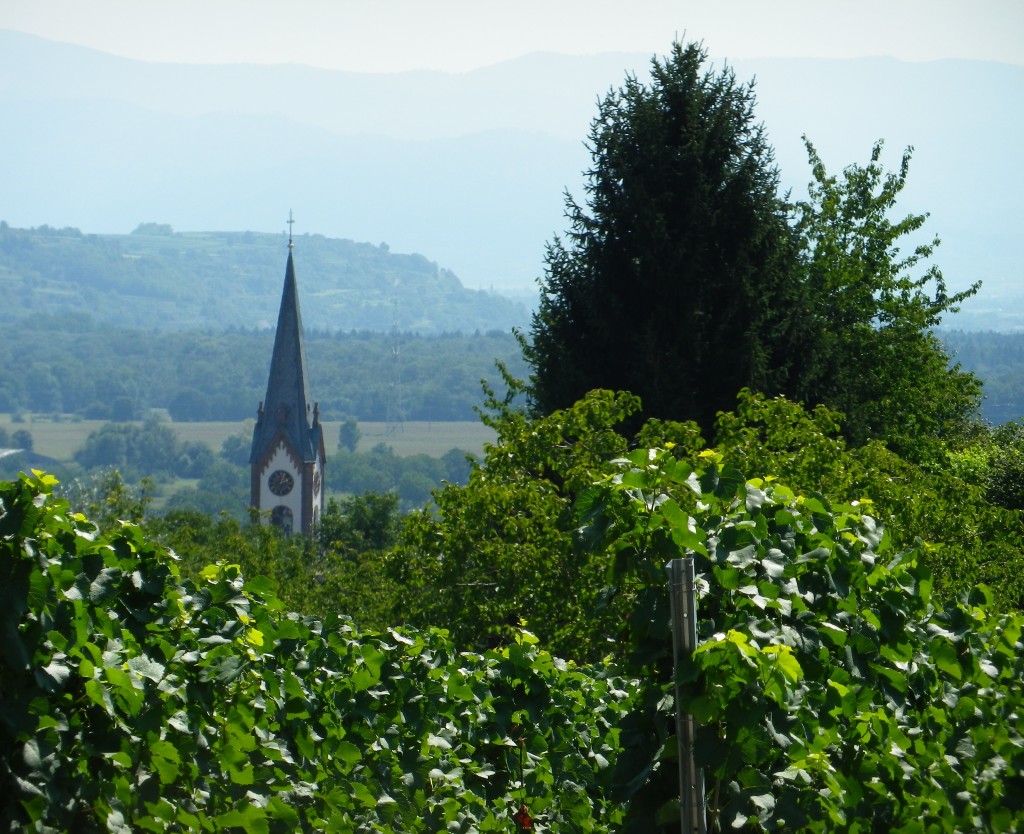
Mercifully flat for a few kilometers outside Ihringen, and on a beautiful, dedicated bike path, the final hill presented itself on the far side of Merdingen, in the Tuniberg wine district. This was more of a ridge to ascend and traverse, with wonderful views looking back onto the Kaiserstuhl massif, and looking ahead into the fabled Black Forest, to reach the town of Opfingen. Leaving that town along a creek in the shade of trees was a delightful experience. In fact, this area is a watershed, and for much of the way to Schallstadt, there were little creeks to follow or cross. Just outside the village were fields of corn. Schallstadt faces its vineyards, which lie on the slopes to its south and east, below Ebringen, at the end of this trail.
Technically, both Schallstadt and Ebringen are in Baden’s wine district of Markgraeflerland. This happenstance provides wine lovers an opportunity to experience Baden wines from yet another district! Better yet, from here, you can continue on the main bike trail for more biking pleasure through Baden’s wonderfully diverse Wine-land!
